
Giant Steps is a studio album by the jazz musician John Coltrane. It was released in February 1960 through Atlantic Records. This was Coltrane's first album as leader for the label, with which he had signed a new contract the previous year. The record is regarded as one of the most influential jazz albums of all time. Many of its tracks have become practice templates for jazz saxophonists. In 2004, it was one of fifty recordings chosen that year by the Library of Congress to be added to the National Recording Registry. It attained gold record status in 2018, having sold 500,000 copies.

Blue Train is a studio album by the jazz saxophonist and composer John Coltrane. It was released through Blue Note Records in January 1958. It is Coltrane's only session as leader for Blue Note. The recording took place at Rudy Van Gelder's studio on September 15, 1957.
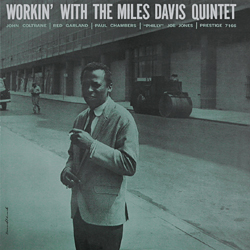
Workin' with the Miles Davis Quintet is an album by the Miles Davis Quintet which was released c. January 1960 through Prestige Records. It was recorded in two sessions on May 11 and October 26, 1956 that produced four albums — this one, Relaxin' with the Miles Davis Quintet, Steamin' with the Miles Davis Quintet and Cookin' with the Miles Davis Quintet.

Monk's Music is a jazz album by the Thelonious Monk Septet, which for this recording included Coleman Hawkins and John Coltrane. It was recorded in New York City on June 26, 1957, and released in November the same year.

Olé Coltrane is a studio album by the jazz musician and composer John Coltrane. It was released in November 1961 through Atlantic Records. The album was recorded at A&R Studios in New York, and was the last of Coltrane's Atlantic albums to be made under his own supervision.

Coltrane Plays the Blues is an album of music by the jazz musician John Coltrane. It was released in July 1962 by Atlantic Records. It was recorded at Atlantic Studios during the sessions for My Favorite Things, assembled after Coltrane had stopped recording for the label and was under contract to Impulse Records. Like Prestige Records before them, as Coltrane's fame grew during the 1960s, Atlantic used unissued recordings and released them without either Coltrane's input or approval.

Thelonious Monk with John Coltrane is a 1961 album by Thelonious Monk issued on Jazzland Records, a subsidiary of Riverside Records. It consists of material recorded four years earlier when Monk worked extensively with John Coltrane, issued after Coltrane had become a leader and jazz star in his own right.

Art Blakey's Jazz Messengers with Thelonious Monk is a studio album released in 1958 by Atlantic Records. It is a collaboration between the Jazz Messengers, the group led by drummer Art Blakey, and Thelonious Monk on piano.
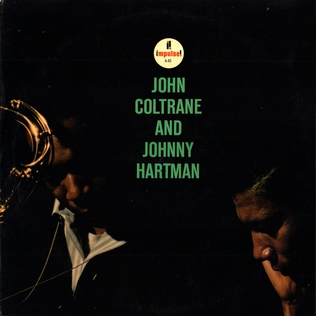
John Coltrane and Johnny Hartman is a studio album by John Coltrane and Johnny Hartman which was released by Impulse! Records in July or August 1963. It was inducted into the Grammy Hall of Fame in 2013.
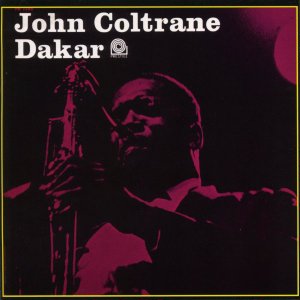
Dakar is a jazz album by saxophonist John Coltrane. It was released in 1963 on Prestige Records.

Coltrane is an album by the American jazz musician John Coltrane which was released in October 1957 by Prestige Records. The recordings took place at the studio of Rudy Van Gelder in Hackensack, New Jersey, and document Coltrane's first session as a leader. It has been reissued at times under the title of The First Trane!.
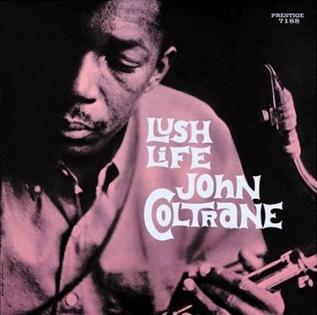
Lush Life is a studio album by the jazz musician John Coltrane. It was released in early 1961 through Prestige Records. It was assembled from previously unissued tracks from three recording sessions at Van Gelder Studio in Hackensack, New Jersey in 1957 and 1958. As Coltrane's profile increased during the 1960s, some years after the end of his Prestige contract, the label used unissued recordings to create new albums without Coltrane's input or approval.

Settin' the Pace is a studio album by the jazz musician and composer John Coltrane. It was released in December 1961 through Prestige Records. It is assembled from previously unissued tracks from a recording session at the studio of Rudy Van Gelder in Hackensack, New Jersey in 1958. Coltrane on tenor saxophone is accompanied by Red Garland on piano, Paul Chambers on bass, and Art Taylor on drums. With Garland and Chambers, Coltrane had played together since at least October 1955 in Miles Davis' band. With Art Taylor they were part of the Tenor Conclave recordings in September 1956. As a quartet they had already recorded two albums for Prestige, John Coltrane with the Red Garland Trio and Soultrane. The material the quartet recorded on this session were extended interpretations of three popular songs and "Little Melonae", a classic bebop tune written by Jackie McLean. Of note is Coltrane's use of the sheets of sound technique, particularly on "Little Melonae".

Coltrane Jazz is a studio album by the jazz musician John Coltrane. It was released in early 1961 on Atlantic Records. Most of the album features Coltrane playing with his former Miles Davis bandmates, pianist Wynton Kelly, bassist Paul Chambers and drummer Jimmy Cobb during two sessions in November and December, 1959. The exception is the track "Village Blues", which was recorded October 21, 1960. "Village Blues" comes from the first recording session featuring Coltrane playing with pianist McCoy Tyner and drummer Elvin Jones, who toured and recorded with Coltrane as part of his celebrated "classic quartet" from 1960 to 1965.

Coltrane is a studio album by the jazz saxophonist, bandleader, and composer John Coltrane. It was recorded in April and June 1962, and released in July of that year through Impulse! Records. At the time, it was overlooked by the music press, but has since come to be regarded as a significant recording in Coltrane's discography. When reissued on CD, it featured a Coltrane composition dedicated to his musical influence "Big Nick" Nicholas that the saxophonist recorded for his Duke Ellington collaboration Duke Ellington & John Coltrane (1963). The composition "Tunji" was written by Coltrane in dedication to the Nigerian drummer Babatunde Olatunji.

Trane's Blues is a compact disc credited to the jazz musician John Coltrane, released in 1999 on Blue Note Records, catalogue 98240. It comprises recordings from sessions for Blue Note and United Artists Records with Coltrane as a sideman for Paul Chambers, Sonny Clark, Johnny Griffin, and Cecil Taylor. These recordings were issued respectively on their Whims of Chambers, Sonny's Crib, A Blowin' Session, and Hard Driving Jazz albums. Two selections are from Coltrane's own 1957 Blue Train, and "One for Four" had been previously unissued. "Trane's Blues" had been issued on the compilation High Step in 1975, previously known as "John Paul Jones" and named after himself, the bass player Chambers, and the drummer Philly Joe Jones. Like Prestige Records before them, as Coltrane's fame grew long after he had stopped recording for the label, Blue Note used varied recordings, often those where Coltrane had been merely a sideman, and reissued them as a new album with Coltrane's name prominently displayed. In this case, the Big Four conglomerate EMI continued that earlier practice.

Wheelin' & Dealin' is an album by Frank Wess, John Coltrane, Paul Quinichette, Mal Waldron, Doug Watkins and Art Taylor released in April 1958 by Prestige Records. It was later reissued on New Jazz Records in 1964. On a small number of reissues, it is credited to "The Prestige All Stars", a name used by Prestige for various combinations of musicians who were under contract to the label. The compact disc reissue adds two alternate takes that did not appear on the initial vinyl releases.
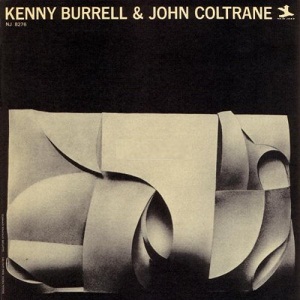
Kenny Burrell & John Coltrane is a studio album of music performed by jazz musicians Kenny Burrell and John Coltrane. It was released on the New Jazz label in April 1963. The recording was made on March 7, 1958. It was reissued in 1967 on New Jazz's parent label Prestige, with a different cover and retitled The Kenny Burrell Quintet With John Coltrane.

Tenor Madness is an album by jazz musician Sonny Rollins released in October 1956 by Prestige Records. It is most notable for its title track, the only known recording featuring both Rollins and John Coltrane.

Introducing Johnny Griffin is the debut album by the jazz tenor saxophonist Johnny Griffin. It was released on Blue Note in February 1957. The recording was made at the Van Gelder Studio in Hackensack on April 17, 1956. and




















